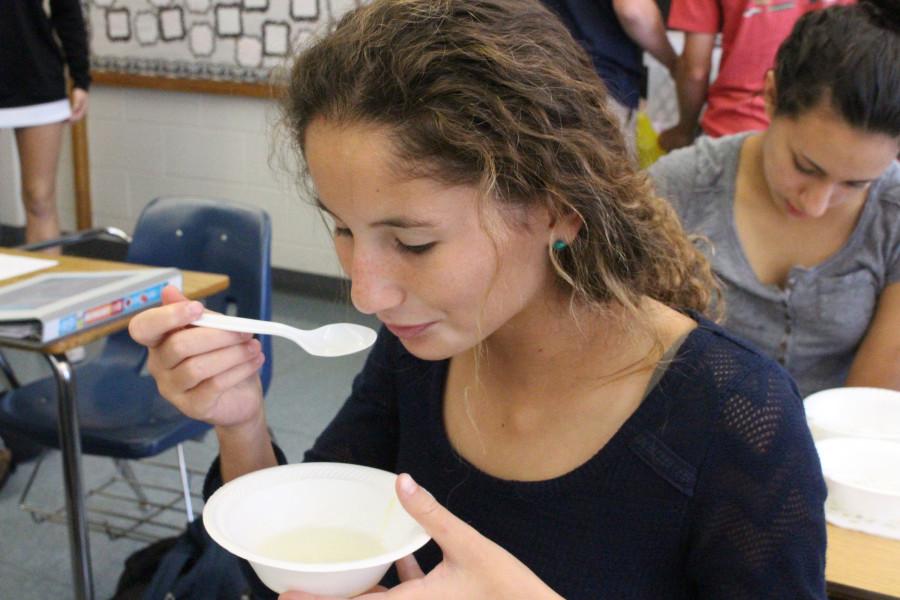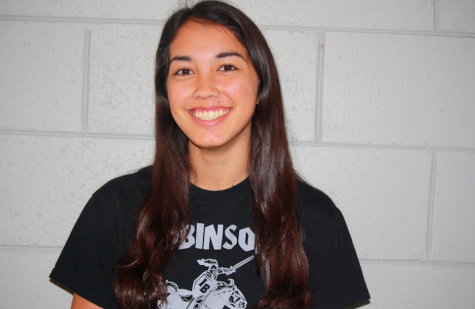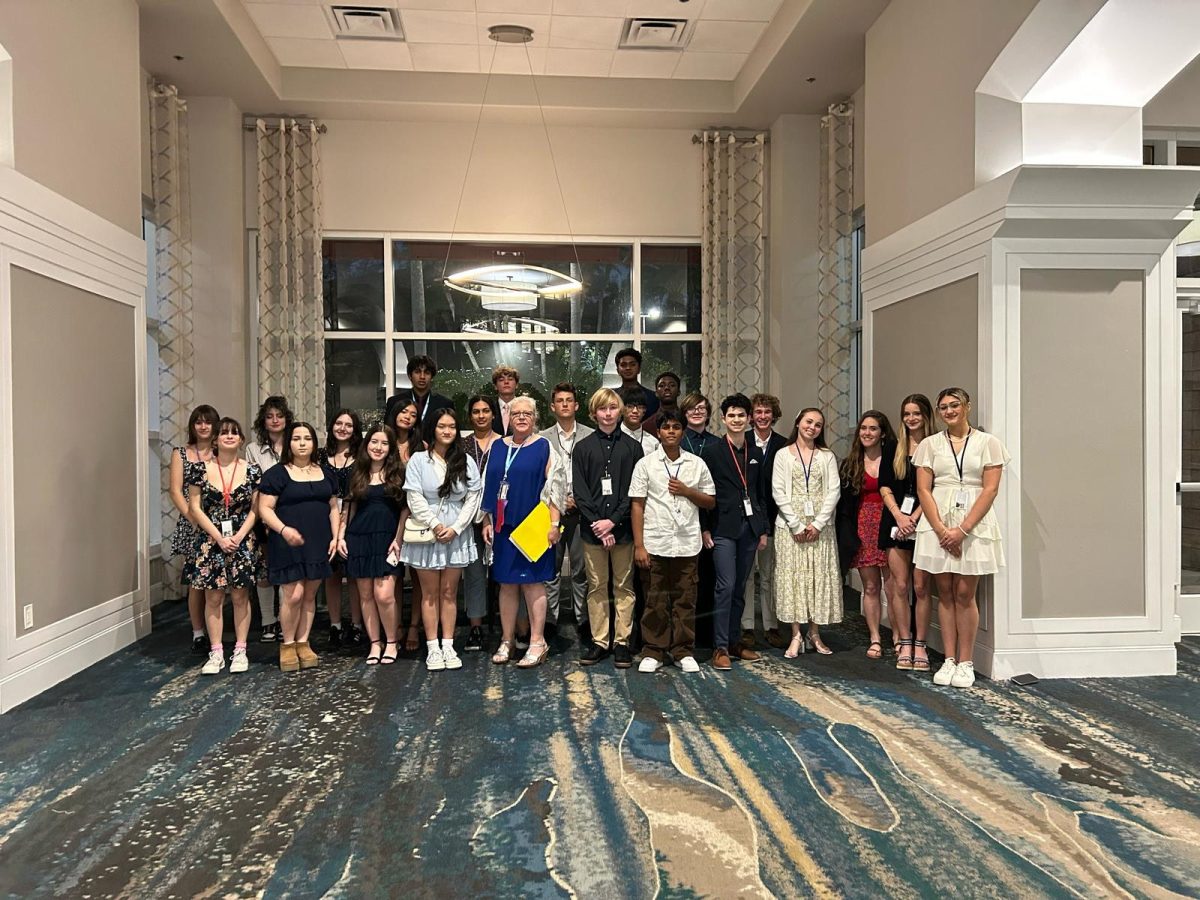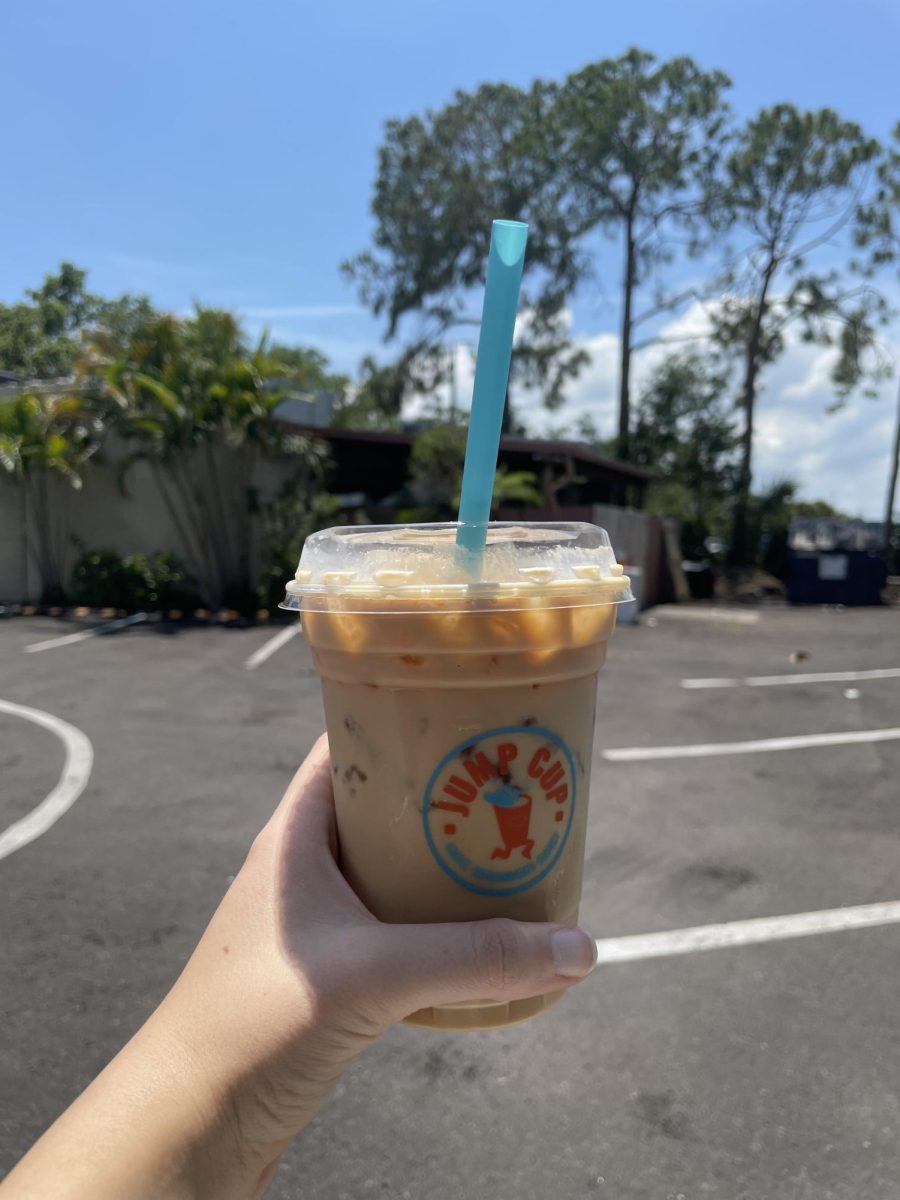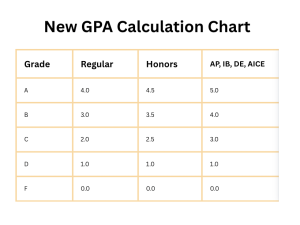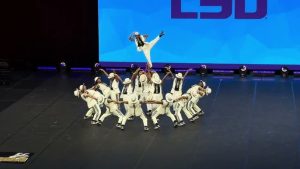Presentations Help Culture and Literature Combine
Photo L. Pustam
Sophie DeAnnuntis (’17) tries some Japanese Ramen that the characters in Kitchen ate.
November 3, 2015
Last week, IB English teacher Susan DiFederico’s students began their presentations on Kitchen by Banana Yoshimoto, a love story centered around a woman named Mikage who lives in Tokyo and has a strong interest in kitchens.
The purpose of these presentations was to understand the viewpoint of Yoshimoto and her purpose in incorporating specific cultural aspects. Each student chose a specific aspect of Japanese culture that relates to the book, such as city life in Tokyo or Japanese plants.
“They’re bringing us the facts, the details and the graphics to help us better understand what Banana Yoshimoto was talking about,” DiFederico said.
The presentations were to be no longer than five minutes.
By sharing this background cultural information with the class, DiFederico hoped the students would be able to view the novel through the author’s eyes, not that of an American teenager’s.
“The presentations helped enlighten students in the way Japanese people lived so they were no longer biased by American culture,” she said. “We need to explore what it was like in the 1980s.”
Many students, with topics covering Japanese cuisine, brought in a sample of a type of Japanese food to share with the class. These foods ranged from cucumber salad to katsudon, and it gave students a chance to feel as if they were inside the book.
“After hearing these presentations, I can connect symbolic meanings to specific aspects of Japanese culture and dishes,” Hyeonji Paek (’17) said. “I can see how it’s important to understand the culture of a book before fully grasping the author’s intent.”

